Last Updated on February 16, 2025
When I visited Arizona for the first time in 2010, I immediately fell in love with the scenery there. I loved the diverse Arizona landscape, from the deep red canyons and pine forests of the north to the rough, other-worldly areas of the west. But my favorite is the desertscape of the southern part of the state. Despite an intense immigration policy (we always get stopped by overly-firm, threatening border control agents without ever crossing a border), I love driving through the incredible Saguaros in Southern Arizona.

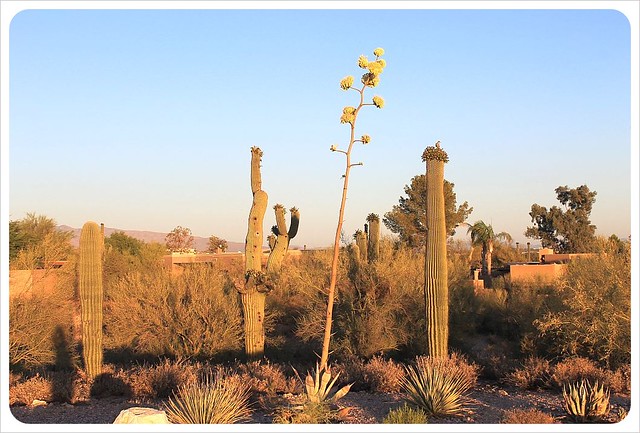

The magnificent Saguaro cacti in Southern Arizona
When we were asked to return to housesit again in Tucson this past June we didn’t think twice and booked two one-way tickets from India, trading the balmy Asian summer for the scorching desert heat. For the first time we could feel what everyone says about it being a dry heat, with 100+ temperature coming as a relief from the same humid temps in India. Our permanently tanned skin easily took the temperatures as well, such a difference to the first time we came to town pale and pasty after four years of living in England.
Seeing Saguaro Cacti in Tucson
The minute we stepped out of the airport though I knew that we had made the right decision, with huge Saguaros right in the parking lot and the mountains in the background.
The Sonoran Desert
The Sonoran desert surrounding Tucson spans across the South West and into northern Mexico – covering 311,000 square kilometers (120,000 sq mi).
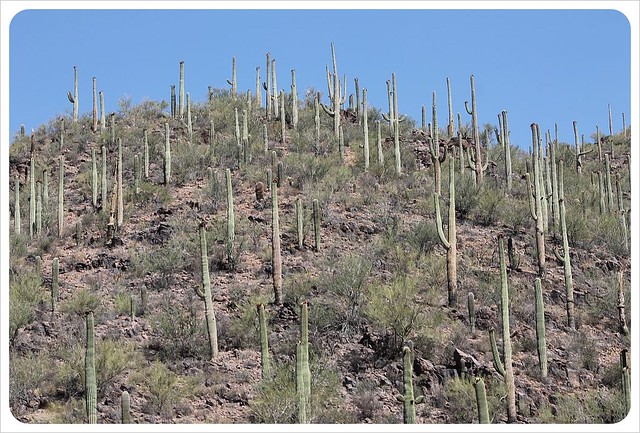
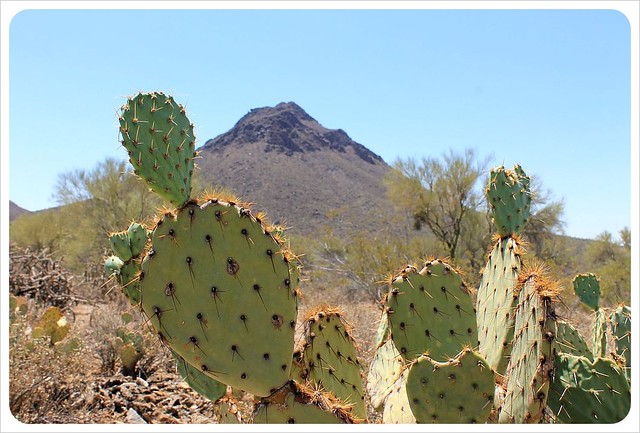 It is fascinating how many plants you actually find within what seems like such a barren place. But there are over 2,000 plant species there, and these plants are hard-core, having adapted to such harsh living conditions.
It is fascinating how many plants you actually find within what seems like such a barren place. But there are over 2,000 plant species there, and these plants are hard-core, having adapted to such harsh living conditions.
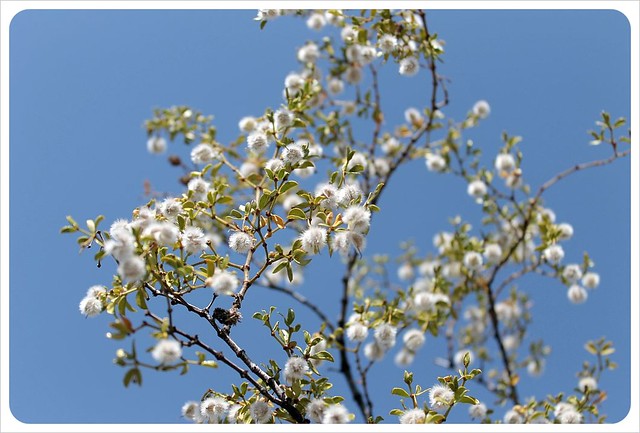
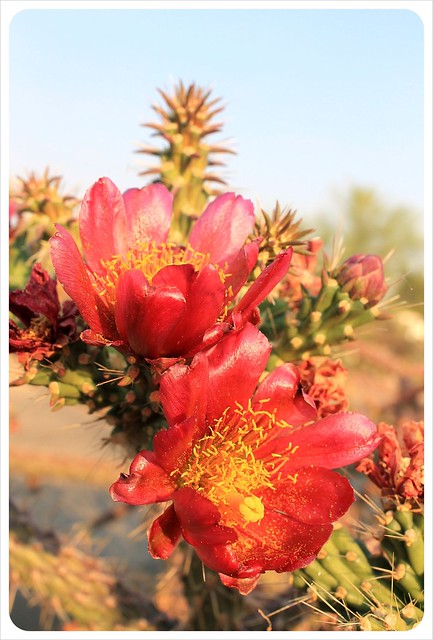
 The Sonoran desert is the only place in the world where the Saguaro cactus grows in the wild, and not only few of them but millions! Tucson’s Saguaro National Park alone is home to over 1 million Saguaros that grow to be 20 meters, or 70 feet, tall.
The Sonoran desert is the only place in the world where the Saguaro cactus grows in the wild, and not only few of them but millions! Tucson’s Saguaro National Park alone is home to over 1 million Saguaros that grow to be 20 meters, or 70 feet, tall.
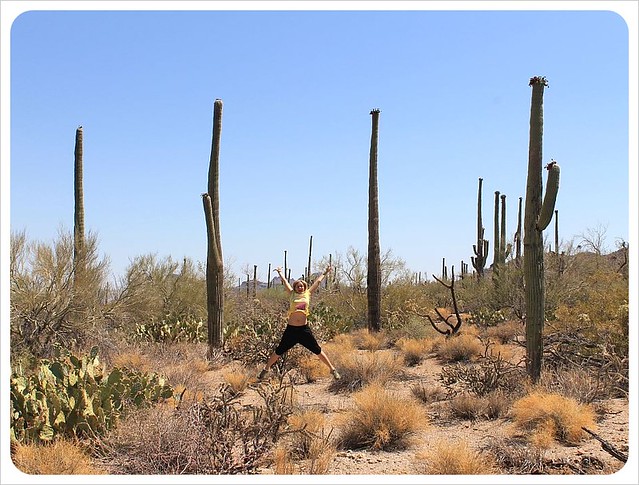
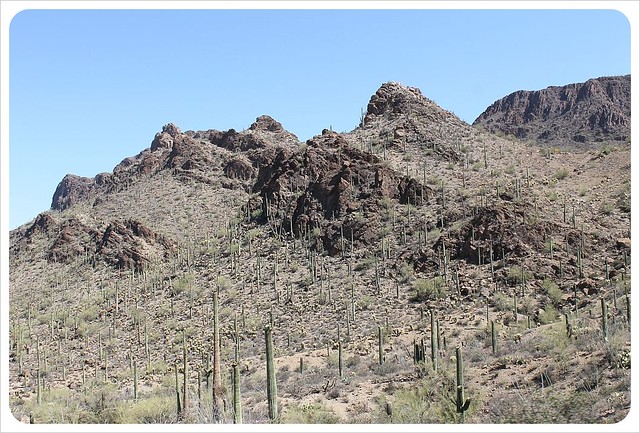
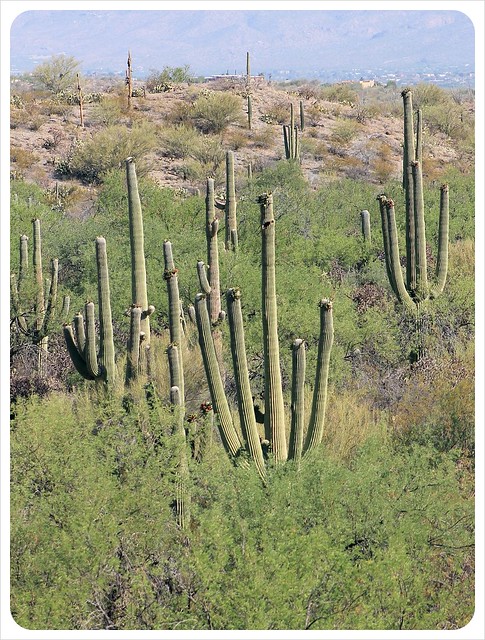
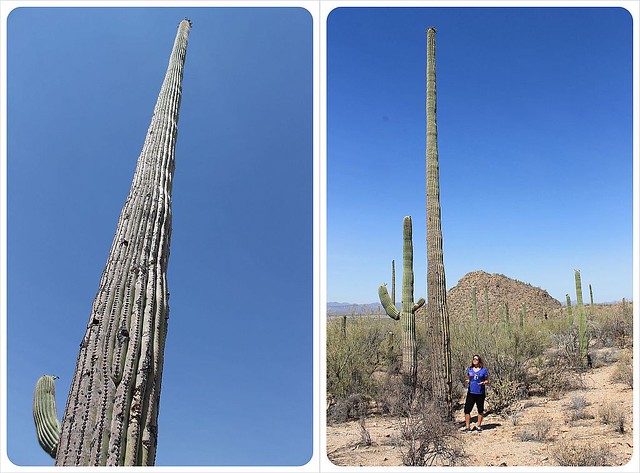
A ‘spear’ is what they are called until they grow an arm. This phase in growth deserves its own name, considering it takes over 75 years to grow that arm! This is only mid-life for Saguaros, though, that reach ages of 150-200 years old.
 It takes a Saguaro up to 10 years to reach a height of one inch (2.54 cm), 15 years to reach one foot (30.5 cm), and 40 years to reach 10 feet (3 meters).
It takes a Saguaro up to 10 years to reach a height of one inch (2.54 cm), 15 years to reach one foot (30.5 cm), and 40 years to reach 10 feet (3 meters).
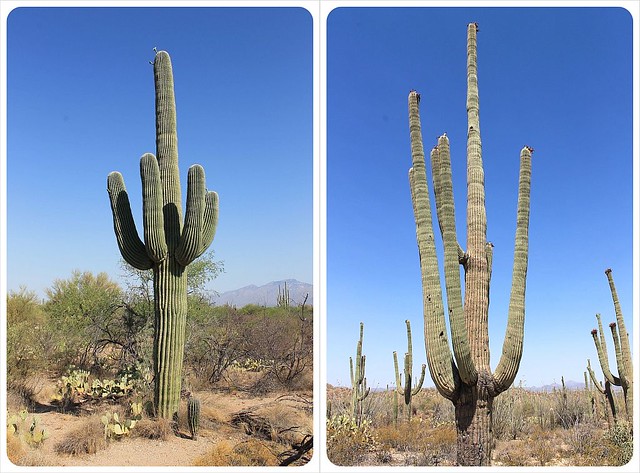

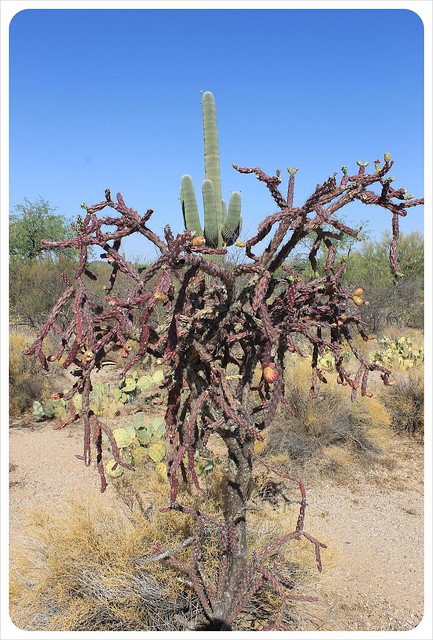 When it rains, you can actually see how the cactus expands, soaking up all the rain water, and then slowly consuming it over the next few weeks.
When it rains, you can actually see how the cactus expands, soaking up all the rain water, and then slowly consuming it over the next few weeks.
 At the age of 40, they start producing flowers, mainly on top of the cactus. Older saguaros have hundreds of flowers when they blossom in May and June each year.
At the age of 40, they start producing flowers, mainly on top of the cactus. Older saguaros have hundreds of flowers when they blossom in May and June each year.
 We have always been in Arizona at the time when the sweet, ruby-colored fruit matures in June. The fruit is edible, and found in local jams, syrups and candies.
We have always been in Arizona at the time when the sweet, ruby-colored fruit matures in June. The fruit is edible, and found in local jams, syrups and candies.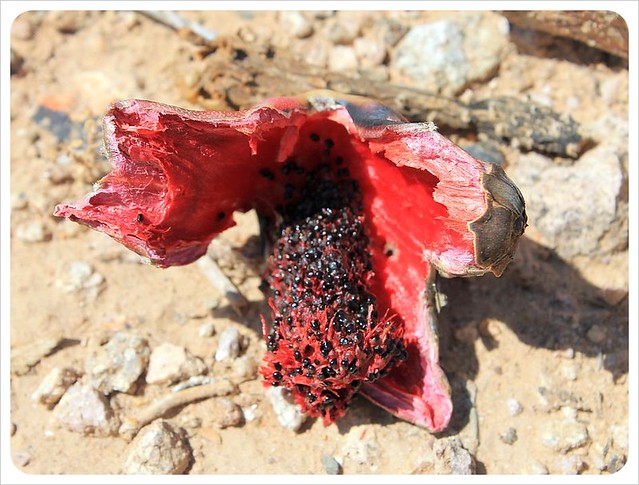 These big, tall and very stationary plants rely on cross-pollination to reproduce. This is mostly done by bats or gorgeous doves who transport seeds from the fruits from one plant to the next. This is such incredible work; it is a wonder there are so many millions of Saguaros!
These big, tall and very stationary plants rely on cross-pollination to reproduce. This is mostly done by bats or gorgeous doves who transport seeds from the fruits from one plant to the next. This is such incredible work; it is a wonder there are so many millions of Saguaros!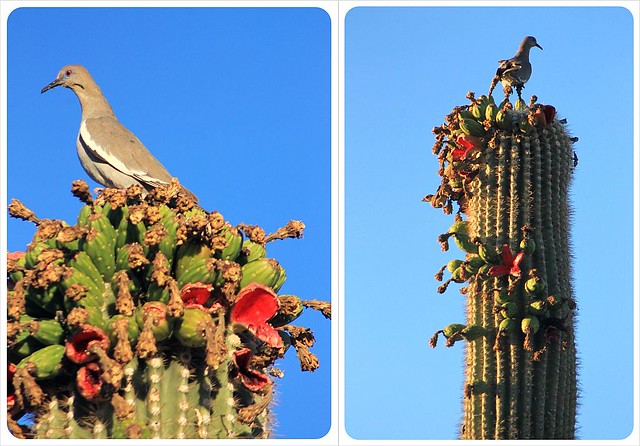 In exchange for the help, many different bird species make themselves at home inside of the spine of the Saguaros.
In exchange for the help, many different bird species make themselves at home inside of the spine of the Saguaros.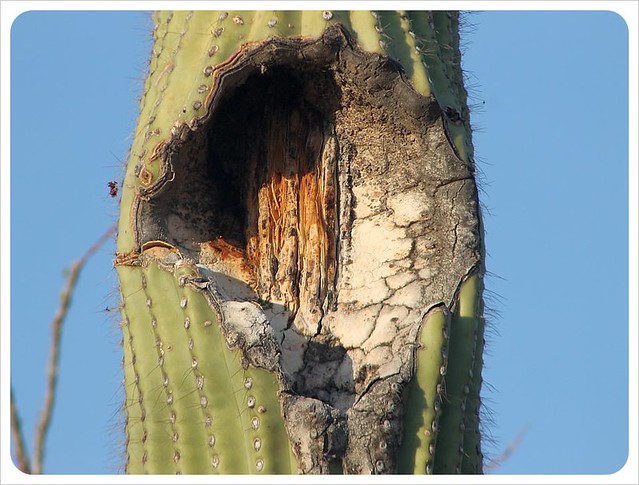 Unfortunately saguaros are actually endangered due to over-development, wildfires, livestock grazing, and ‘cactus rustlers’ who cut them down and sell them elsewhere.
Unfortunately saguaros are actually endangered due to over-development, wildfires, livestock grazing, and ‘cactus rustlers’ who cut them down and sell them elsewhere.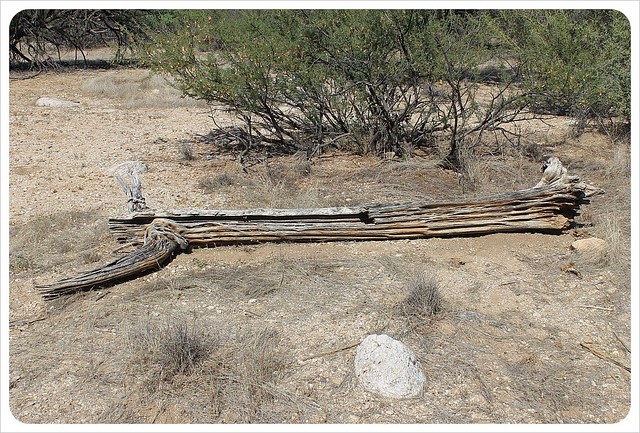 In their normal life cycle, Saguaros die from drought or frost. Their skeletons remain intact for years, sometimes even petrifying, while the skin erodes away quickly.
In their normal life cycle, Saguaros die from drought or frost. Their skeletons remain intact for years, sometimes even petrifying, while the skin erodes away quickly.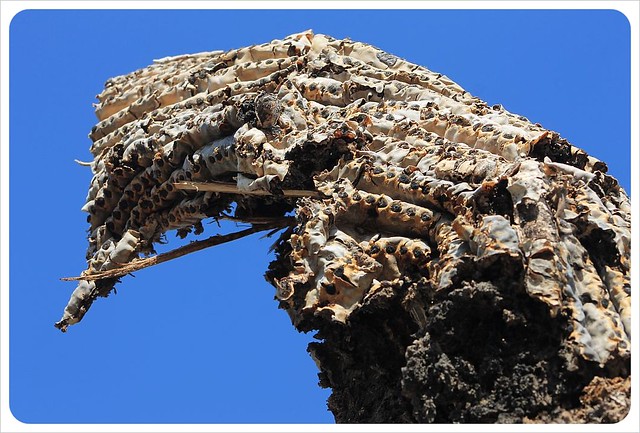
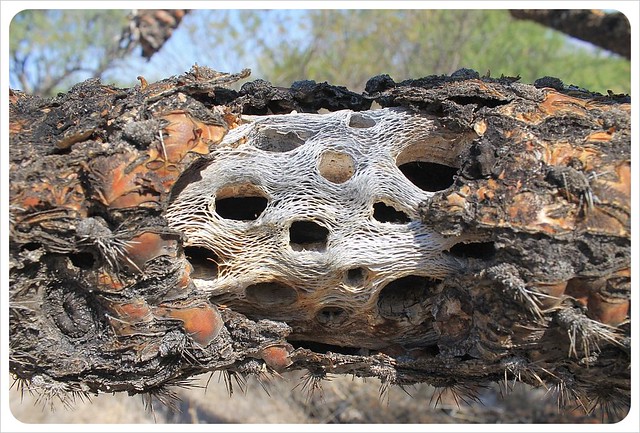 Rightfully referred to as ‘skeletons’, the remaining bones often stay proudly standing for many years.
Rightfully referred to as ‘skeletons’, the remaining bones often stay proudly standing for many years.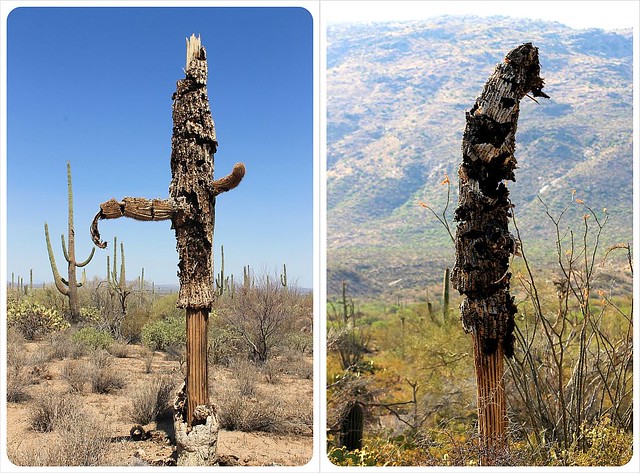
Prickly pear is another cactus that is widely spread across the Sonoran desert, and the big red fruit can be eaten or are used in drinks, most commonly in Mexico. They are pretty cold-resistant and found in the northern States of the U.S. and even southern Canada.
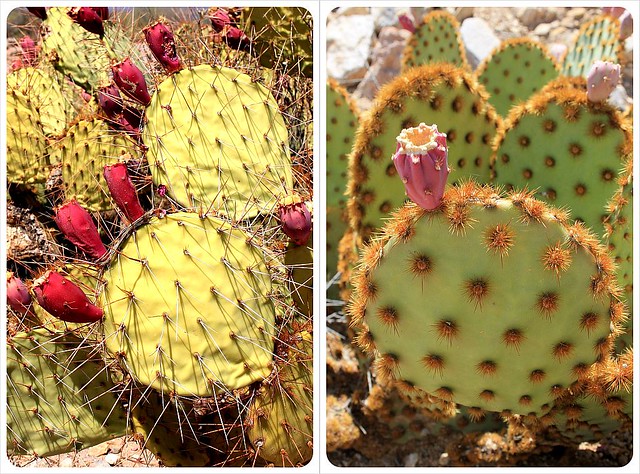 They are also the main food source for the desert tortoises who live here – they don’t seem to be bothered by the sharp cactus needles!
They are also the main food source for the desert tortoises who live here – they don’t seem to be bothered by the sharp cactus needles!
 The Sonoran desert south of Tucson is actually the only place in the U.S. where jaguars live, but the only mammals that come out of their dens during the hot summer months are little rabbits.
The Sonoran desert south of Tucson is actually the only place in the U.S. where jaguars live, but the only mammals that come out of their dens during the hot summer months are little rabbits.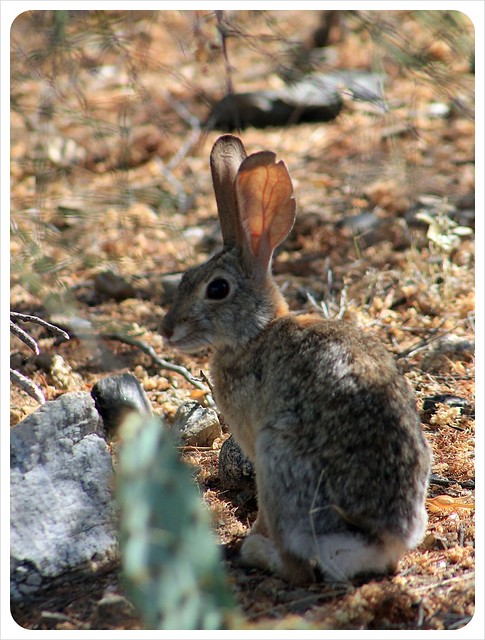
You can see plenty of colorful lizards! Our favorite time of day is usually when the sun starts to set – the sunsets of the Sonoran desert never disappoint and the skies change colors in the most amazing ways – from purple to bright orange.
Our favorite time of day is usually when the sun starts to set – the sunsets of the Sonoran desert never disappoint and the skies change colors in the most amazing ways – from purple to bright orange.
The best places to see Saguaros in Tucson
The very best place to see Saguaro is Saguaro National Park, a national park that’s actually split between two locations: one part on the west side of town (aptly named Saguaro National Park West), and one east of Tucson (Saguaro National Park East).
You can see saguaros from the comfort of your car, if you’re not good on foot – both parts of Saguaro National Park have a scenic loop drive. Saguaro National Park East’s Loop Drive is 8 miles (12.9 kilometers) long. The west side of the park has a rougher, unpaved dirt road. It’s a 6 mile (just under 10 kilometers) loop.
Both scenic loop drives have several viewpoints and trail heads. It’s worth getting out of the car and going on a hike to get a true feel for the barren desertscape. Signal Hill Trail in Saguaro National Park West is a short but scenic 0.3 miles trail that can be done in less than half an hour. The Desert Discovery Nature Trail (also in Saguaro National Park West) is great for families traveling with children – very informative & educational, yet short.

The best hikes in Saguaro West are:
- Short: Gold Mine Trail (2.2 miles / 1 hour) – a trail to an abandoned gold mine
- Medium: The Sendero Esperanza Trail (a 6.4 mile / around 4 hours) – for amazing views
- Long: Hugh Norris Trail (9.4 miles / around 6hours) – one of the best hikes in Saguaro National Park
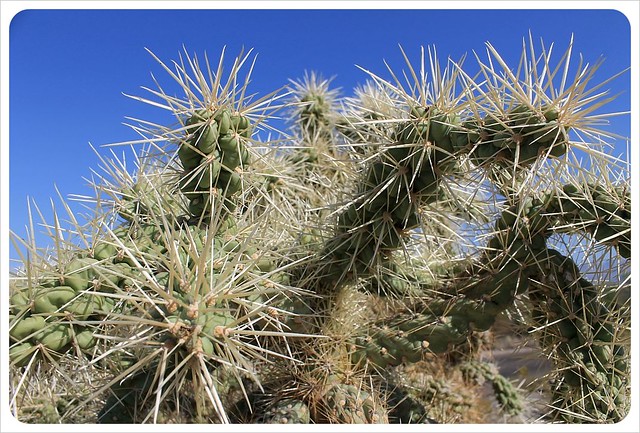
Saguaro West has a lot more hiking trails than Saguaro East, but worth doing in the eastern part of the park are:
-
- Short: Javelina Wash Trail (a 0.3 mile loop / 30 mins)
- Medium: The Lime Kilns Loop Trail (a 3 mile / 90 minutes hike)
- Long: Cactus Forest Trail (10 miles / 3 hours) – the scenery on this trail is amazing!
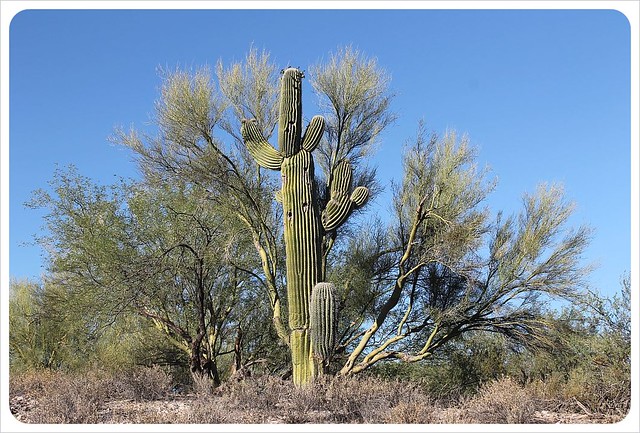
Tip: It is definitely worth visiting both parts of Saguaro National Park, since they have a completely different feel to them. The scenery is different, the loop drives are distinctly different, and it’s worth to hike a trail in each part.
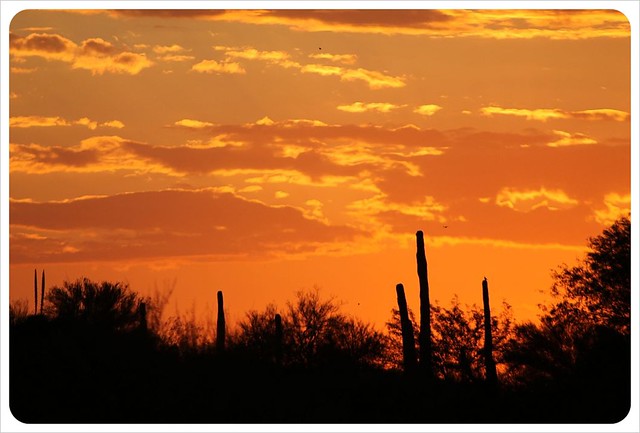

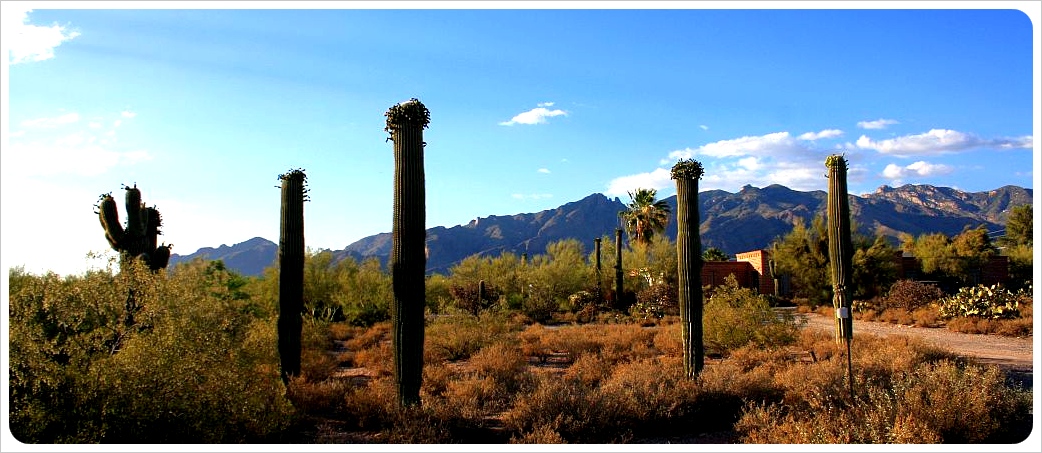
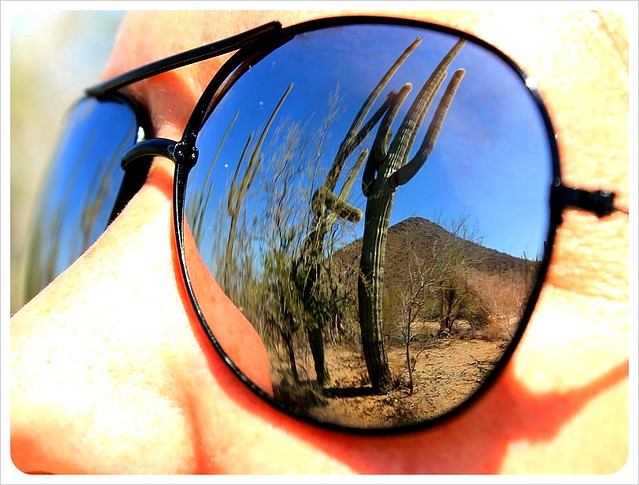
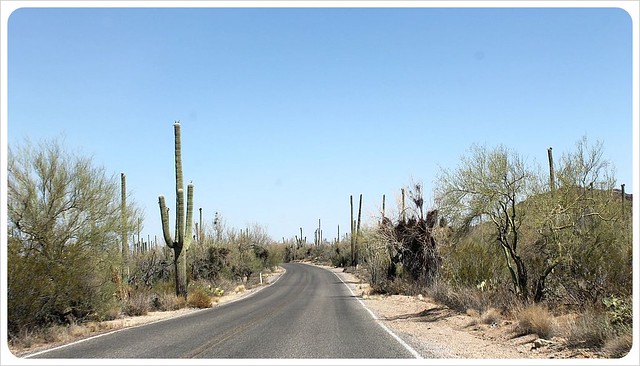


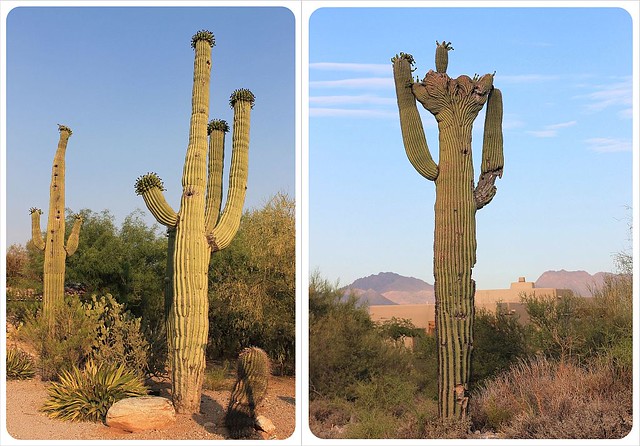




Katherine E Bland
Thursday 23rd of January 2014
Great shots.
Nicole @ Green Global Travel
Thursday 18th of July 2013
Great photos. The reflection in the sunglasses one is awesome. We been to Arizona a few times and love the rock formations and cacti.
Lisa
Tuesday 23rd of October 2012
I can't say i love Arizona as much as you, but the way you love it with your photography comes across well. Great shots.
Dani
Tuesday 23rd of October 2012
Thanks for the kind words, Lisa! I was trying to capture this place that I love so much as good as possible and it makes me happy to hear that this comes across :)
debbie
Friday 12th of October 2012
Beautiful photos!!! We're hoping to make Arizona one of our next trips!
Dani
Sunday 14th of October 2012
Thanks, Debbie! Highly recommend visiting Arizona - there is just so much to see!
northierthanthou
Sunday 23rd of September 2012
I do miss these cacti. ...except when mountain biking. When doing that i could wish them out of existence altogether.